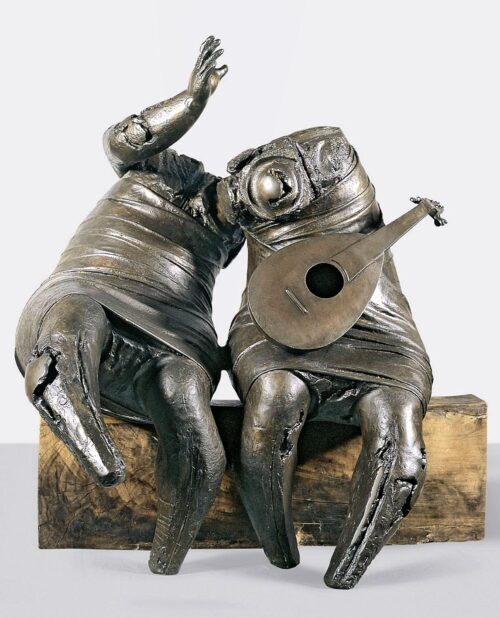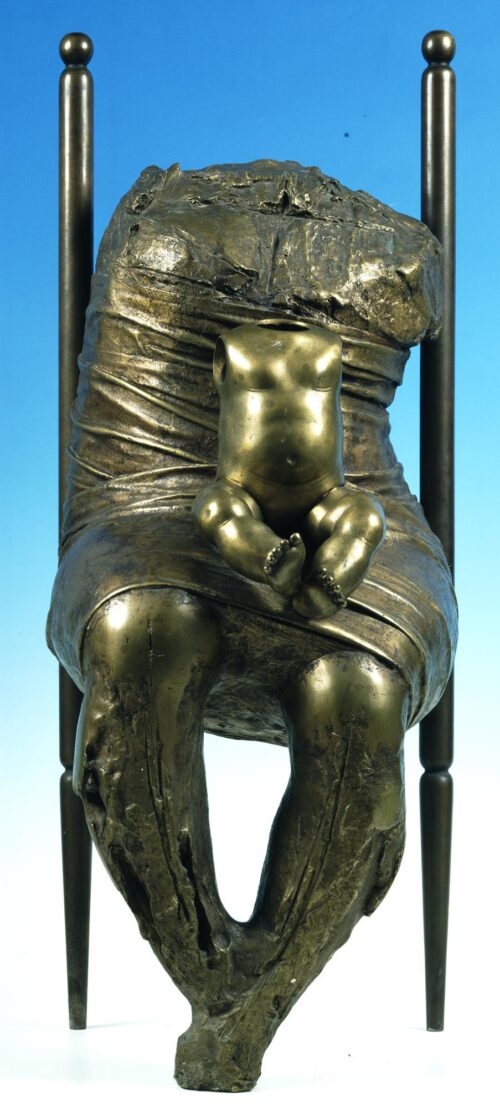
Georgiadis Giorgos (1934)
Paean No. 5, 1978
He studied sculpture at the Athens School of Fine Arts with Yannis Pappas (1954-1959) and on scholarship from the Evgenidis Foundation he continued in Florence, where Bruno Bearzi instructed him in use of metal. In 1975, he received a Ford Foundation endowment. During 1960-1980, he taught drawing at the Doxiadis and Petra schools of art and design.
His work has been shown in solo and group exhibitions in Greece and other countries, including Panhellenic exhibitions. His participations in group events include the Paris “Biennale Internationale des Jeunes Artistes” in 1960, the Alexandria Biennale in 1976, in which he won second prize, and the Venice Biennale in 1984, the “International Exhibition of Contemporary Sculpture” (“Exposition Internationale de Sculpture Contemporaine”) in Paris as well as the exhibition “The Arts in Europe” (“Les Arts en Europe”) in Brussels in 1976, in which he won the first prize.
An exponent of surrealism in sculpture, Georgiadis began his creative career with everyday life scenes. From 1967, the surrealist element increasingly prevailed in his work. In what was to become his main subject – the headless female body, without arms and with feet cut off, the figure wrapped in a piece of cloth from below the chest down to the knees – new, unrelated elements kept being added, such as dolls’ limbs and eyes, whereas other figures, such as Nikes with their wings mutilated, evoke an unreal atmosphere. The distortions suffered by these individual or group figures elevate them into symbols. In the 1980’s, his interest in the symbolic role of the figure shifted towards plastic features. During the same period, moreover, and touched by the Third World tragic situation, he produced a series of works with messages of a distinctive immediacy, using photorealistic or ready-made techniques.

Paean No. 5, 1978

Distressing Realization, 1973

We use cookies to make our site work properly, to personalize content and ads, to provide social media features and to analyze our traffic. We also share information about how you use our site with our social media, advertising and analytics partners. Read the Cookies Policy.
These cookies are necessary for the website to function and cannot be switched off in our systems. They are usually only set in response to actions made by you which amount to a request for services, such as setting your privacy preferences, logging in or filling in forms. You can set your browser to block or alert you about these cookies, but some parts of the site will not then work. These cookies do not store any personally identifiable information.
If you disable this cookie, we will not be able to save your preferences. This means that every time you visit this website you will need to enable or disable cookies again.
These cookies tell us about how you use the site and they help us to make it better. For example these cookies count the number of visitors to our website and see how visitors move around when they are using it. This helps us to improve the way our site works, for example, by ensuring that users find what they are looking for easily. Our website uses Google Analytics for statistics reporting.
Please enable Strictly Necessary Cookies first so that we can save your preferences!